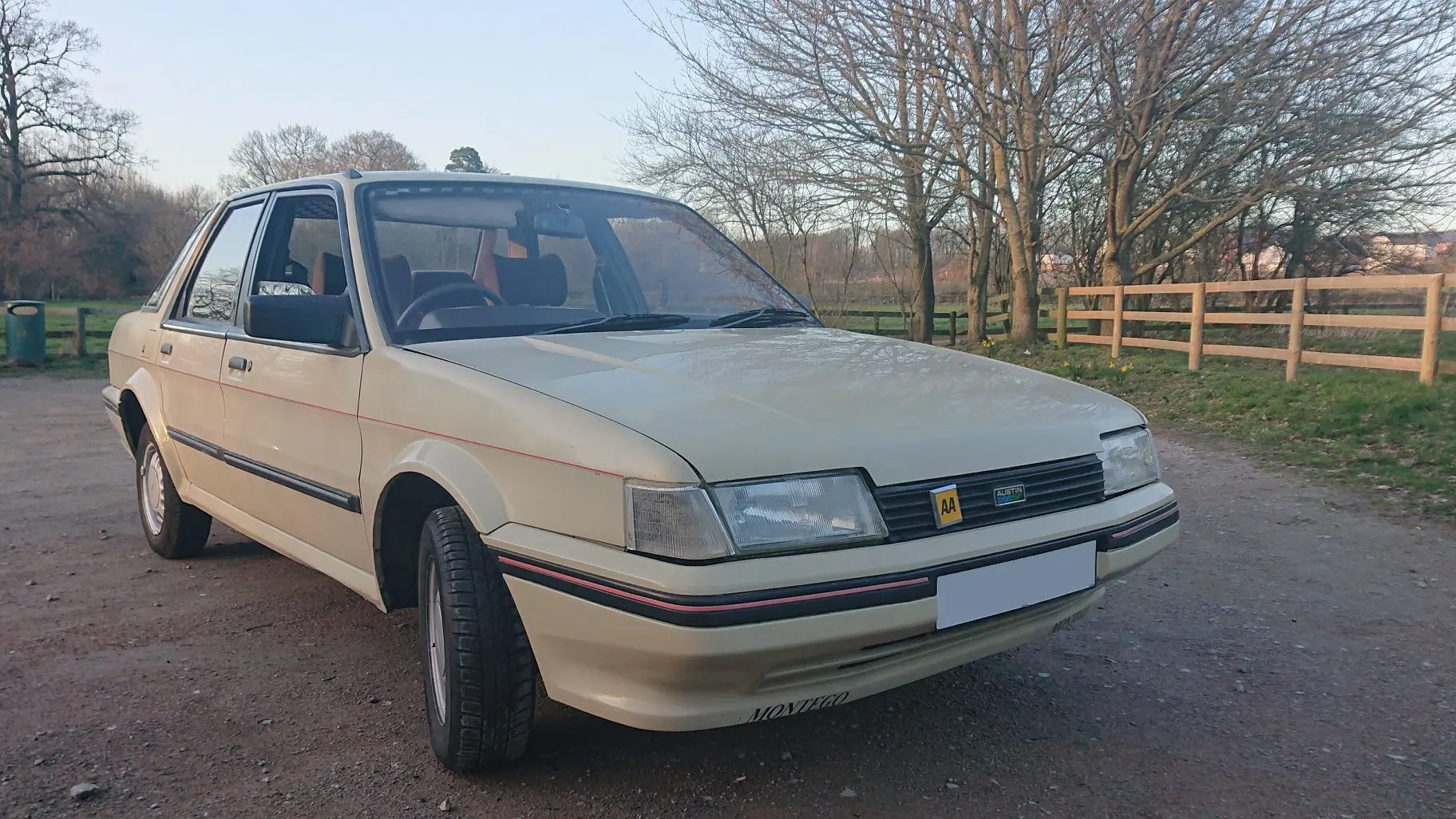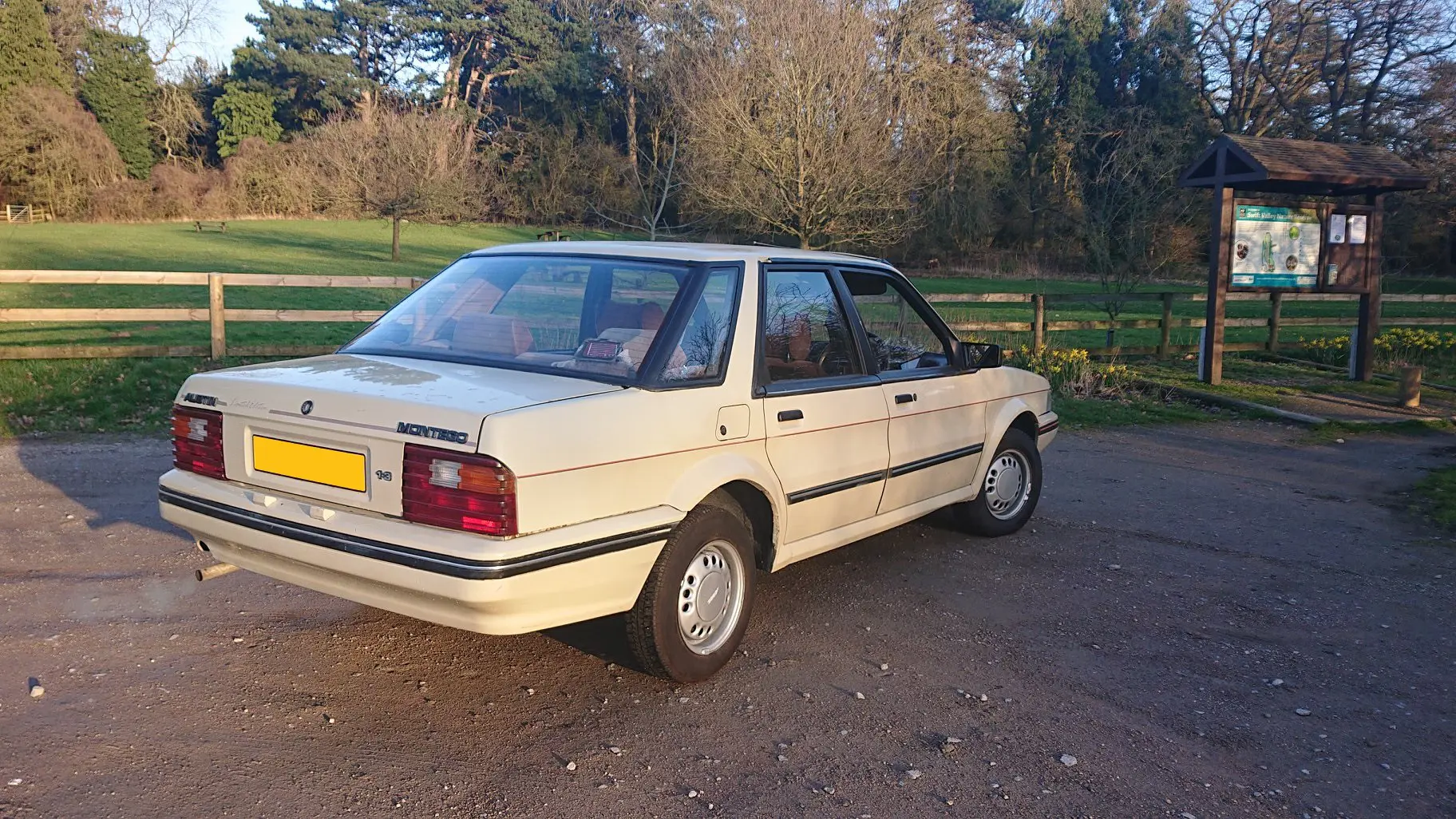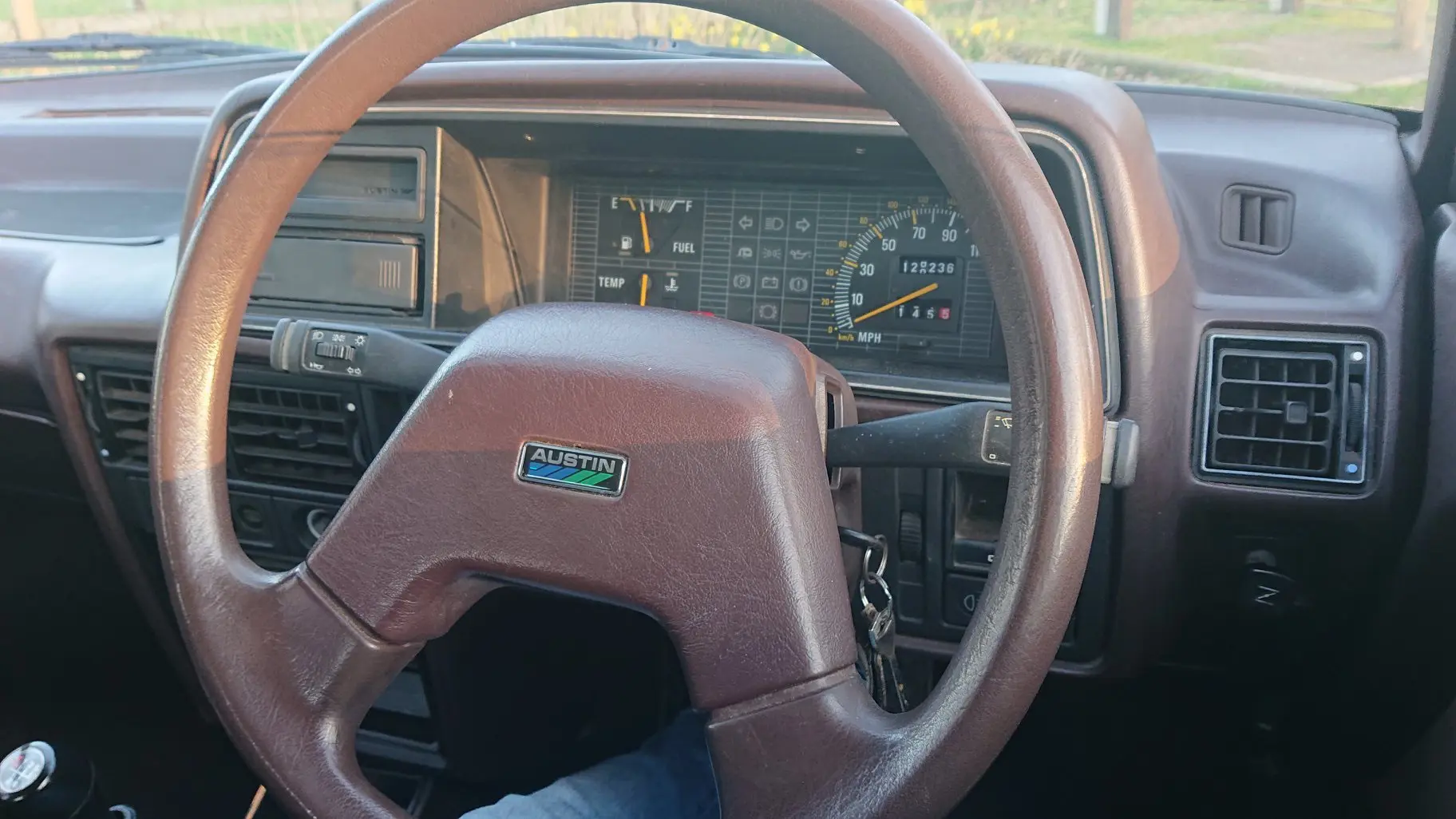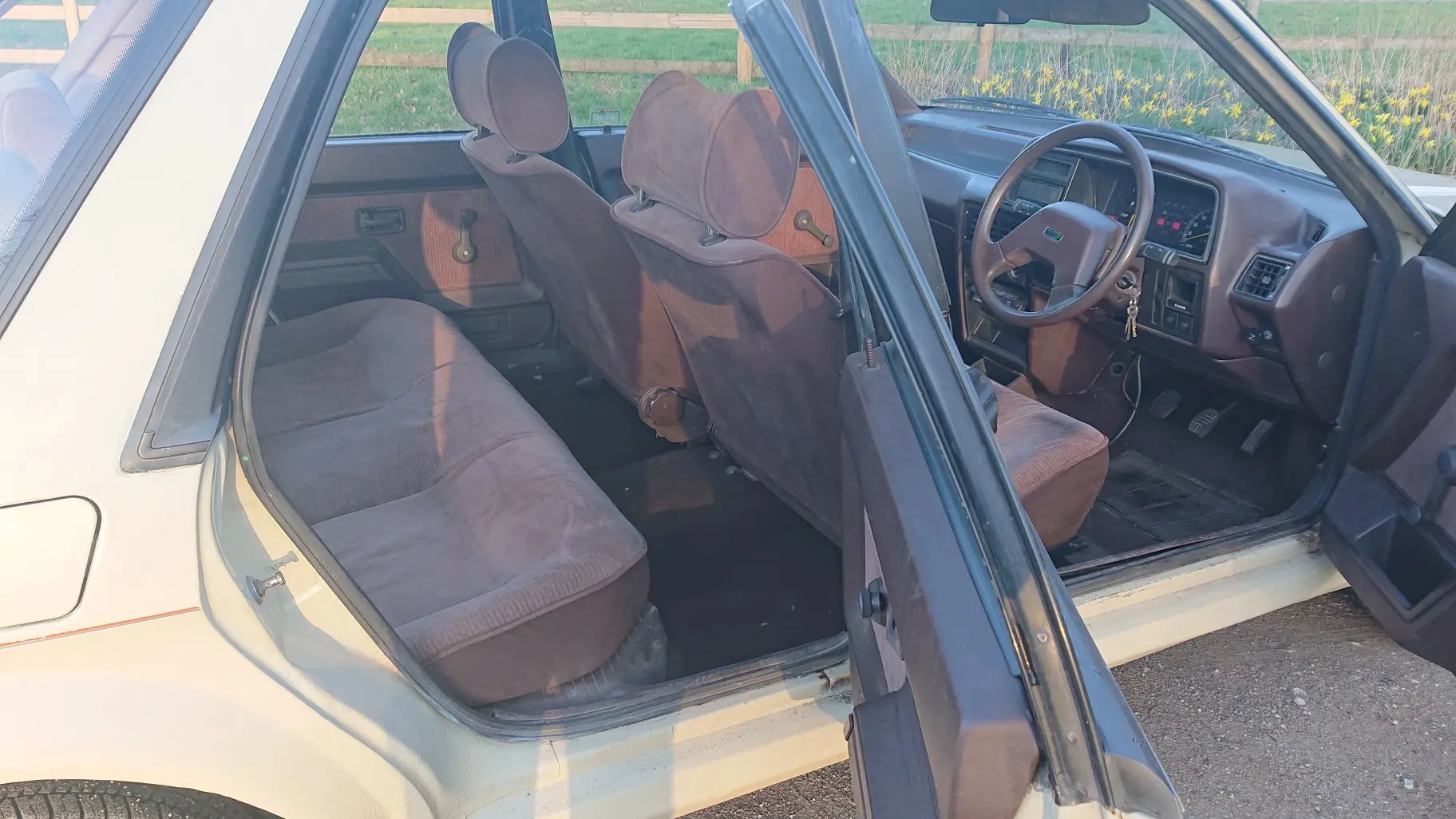COUNTDOWN TO 40 – SEAN GREENWOOD’S AUSTIN MONTEGO 1.3 BASE
09 October 2024
An autobiographical note: I was 14 when British Leyland introduced the Austin Montego on 25 April 1984, and I can vividly remember the sense of anticipation in the press before its launch. Car magazine published a major preview in late 1981 and, even then, it was evident that the Morris Ital, never intended as more than a stopgap, was due for replacement. For many dealers, the £210 million Project LM11 could not arrive soon enough.

When the Montego finally debuted, there was a sense of hope that BL had the lynchpin of their Austin-Rover division. One Leyland executive observed: “Not having a Cortina or Cavalier in our line-up was like having one arm tied behind our back.” My impression was that while the Montego and the Maestro were clearly related – they shared brakes, steering, suspension and basic floor pan – LM11 had its own identity. The Montego was over a foot and a half longer, and no rival saloon had those opera C-pillar windows.
One element the MG Montego had in common with the more expensive Maestros was its talking dashboard. In my Hampshire village, there were mutterings that such devices meant no good, and we needed to return to the true values of driving Morris Oxfords and wearing demob suits. Meanwhile, Harold Musgrove, the MD of Austin-Rover, told the press:
For the past three years, I have had to sit and take it while our competitors took the cream. Yet all that time I knew we had a real winner in LM11. Metro saved our bacon, Maestro pointed the way ahead, but Montego will unlock the door not only to bigger sales at home but also help us to build networks in overseas markets.

BL hoped to sell 4,000 Montegos per week, 60% intended for fleet customers. The great automotive historian, Keith Adams, noted that, in 1984, the total value of this market “was put at between £7,000 million and £8,000 million a year”. Furthermore, six out of 10 business sales went to Ford and Vauxhall. Motor bluntly summarised the scenario facing Leyland: “Since the arrival of the Cavalier and the Sierra, reps have never had it so good. Now they won’t accept anything less.”
In response, BL commissioned an elaborate training film, with Peter Egan’s Ghost of Leyland Yet To Come guiding Robert Lindsay’s terribly efficient dealer the night before his Montego launch party:
The script highlighted how Austin-Rover outlets needed to make conquest sales to local businesses that had not previously considered a British Leyland product. Fortunately, Sue Baker’s Montego test in The Observer must have been music to the ears of BL’s management. She thought it achieved “an element of distinction in a notoriously bland middle sector of the car market”. Not to mention: “I like it for its character, roominess, nimble performance and ingenious detail, some of which falls into the category of why on earth has nobody done this before?”
Autocar was “impressed by the smooth revving way in which the new 1,598cc S-series unit delivered its power”, while the Volkswagen-sourced gearbox was “slick and precise, nicely weighted, and particularly impressive in the way the dog-leg second-to-third shift can be snatched, with a smooth, straightforward action”. Motor regarded the Montego as nothing less than a make-or-break model which needed to be of exceptional ability to win sales from the Cavalier and the Sierra. Their test concluded:
If what you have read on the previous pages leaves you in any doubt, let us make it perfectly clear. The Montego is such a car. Anyone tempted to dismiss it as a Maestro with a boot should take a closer look.

Sean points out: “The Montego sure caught the attention of overseas markets – the Maltese certainly enjoyed a Montego – though not quite the fleet demographic”. Yet when production ended in 1994, there was the sense that it had not achieved its commercial potential. Musgrove believed:
It was the case – again – that the Montego was so much better than BL products from the past. It took buyers time to catch up with the new reality. But it suffered from that image, and many buyers had already decided that they would never buy an ARG product – based on past experiences.
And this writer can certainly remember the impact of news bulletin after news bulletin concerning industrial disputes – and British Leyland jokes on comedy shows – in the years before the Montego’s launch. The accumulative effect was genuinely toxic, and BL’s new generation of FWD products of the early 1980s had to fight against reputational damage as much as their competitors. This is why younger enthusiasts such as Sean Greenwood are essential to the Montego, as they never experienced the News at Ten opening with: “The strike at Cowley continues. The government says...”. Instead, they appreciate the car on its own merits. Sean says his Montego is “everything the Base promises to be”, from the “long-throw, VW-sourced gearbox to the noise”.

Plus, Sean’s Montego evokes so many memories of life near Southampton circa 1984. It was a realm of beige and brown vehicles, the occasional Paul Calf-a-like in grey slip-on shoes and Confessions of a Driving Instructor gathering dust in the Betamax section of the local video library. I seldom encountered an MG or Vanden Plas on the A27, as the norm was the Base. “With the arrival of the Montego, economy motoring will never be the same again,” promised Austin-Rover, who listed a “boot mat” as a Base feature.
Not to mention the owner aspiring to the delights of a Montego L’s “passenger door bin” and “centre console with trinket tray”.
With thanks to Sean Greenwood for his time and permission to use the images in this blog.
